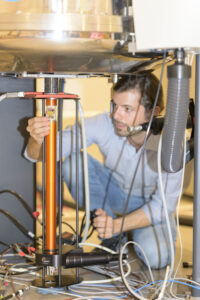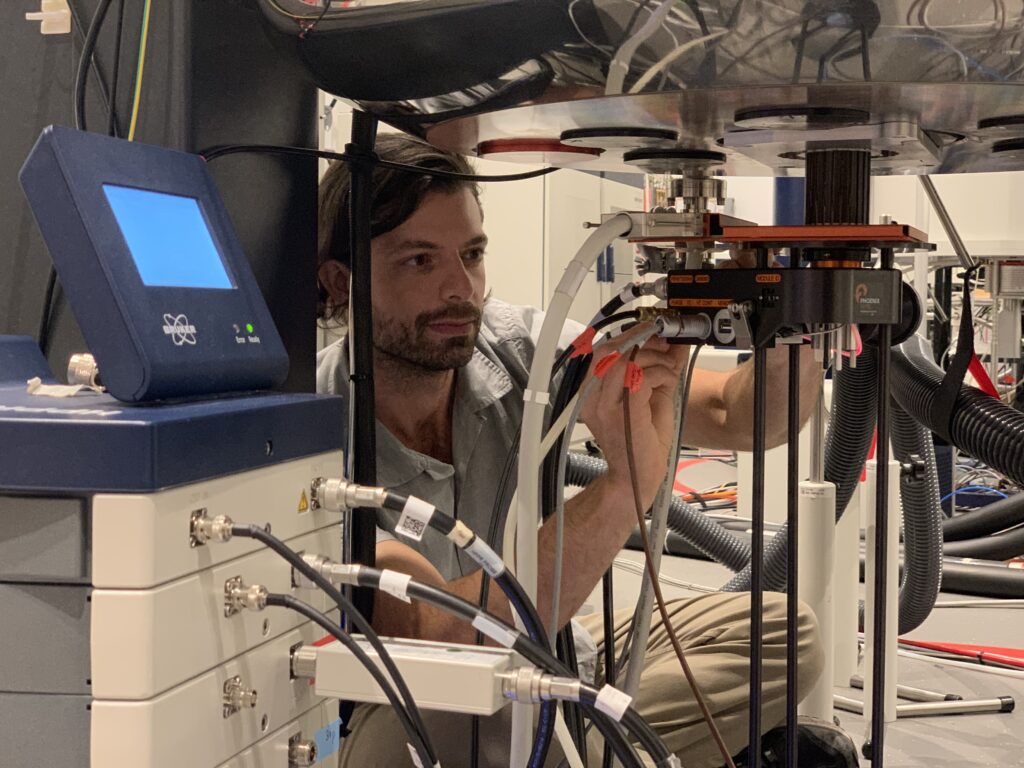The CUNY Energy Institute, housed in City College’s Grove School of Engineering, is working to develop sustainable energy technologies in a multidisciplinary setting with researchers from across the university system.
“It creates an ecosystem where we can collaborate and learn from each other and publish together and write grants together,” CCNY chemical engineering professor Dr. Robert Messinger told The RICC in an interview. “It provides a framework.”
Messinger is just one of the CCNY faculty members who is a part of the Energy Institute, for which he works on finding and creating new “battery chemistries, materials, ideas, concepts and prototypes.”

Overall, his work is about energy storage and recycling, with a large part related to batteries. For the institute, Messinger
works on advanced characterization using multidimensional nuclear magnetic resonance, or NMR, spectroscopy to study material compositions, structures and dynamics up from the molecular level. His research revolves around “electrochemical materials and multi-phase fluids up from the atomic length scale, aimed at solving major technological problems in energy and the environment.”
The Energy Institute was founded by CCNY’s Sanjoy Banerjee in 2008.
Banerjee is a distinguished professor in the Chemical Engineering Department and the director of the institute. Banerjee’s work centers on the behavior of systems such as electrochemical energy storage devices, particularly aqueous zinc batteries.
“One of the unique things about [the CUNY Energy Institute] is the breadth of the expertise that we have, in electrochemical energy storage in particular,” Messinger said. “If you look at all the different chemistries to fundamental science to applied technology development to spinning off companies to advanced characterization, it’s really pretty remarkable and so that’s one of the strong points of the CUNY Energy Institute.”
The institute also gives students the opportunity to work in the lab, performing research that will have real world impacts and solutions.

Photo: Courtesy of Rob Messinger
“CUNY is a really unique place,” Messinger said. “The students are hardworking, energetic, hungry for new knowledge, diverse and unpretentious. People you want to work with. And those are the best. I love CUNY students.”
Outside of the institute, Messinger is the director of Graduate Studies for the Department of Chemical Engineering and the founding director of the NASA-CCNY Center for Advanced Batteries for Space.
His research is separated into three research thrusts.
The first thrust is about novel battery chemistries, meaning new kinds of batteries that will be able to work effectively while also dealing with extreme temperatures and conditions and faster charging as compared to existing batteries. His team is working on developing rechargeable aluminum metal batteries, a relatively new battery technology, as well as advanced lithium batteries for robotic spacecraft or fast-charging electric vehicles.
The NASA-CCNY Center is working on developing advanced lithium batteries for robotics spacecraft that can withstand the extreme conditions of space.
The next thrust is about materials — multi-phase fluids — for thermal energy storage. This work is done in collaboration with mechanical engineering professor Dr. Masahiro Kawaji, who is the associate director of the CUNY Energy Institute and is the principal investigator of the Partnerships for International Research and Education, or PIRE, project at CCNY. In this work, Messinger researches the molecular origins of storing energy in the phase change between different states of matter, like when you harden and melt beeswax.
Within this thrust, the professor has two projects about recycling. One is lithium-ion battery recycling and the other, funded by the U.S. Department of Energy, is about rare earth element recycling.
The third thrust of Messinger’s research, which involves extensive collaborations with the CUNY Energy Institute, is applying and developing methods of NMR spectroscopy, which is a technique for determining the compositions, structures, and dynamics of materials at a molecular level. As part of this thrust, he works with Banerjee on zinc batteries, as well as other CUNY researchers.

Messinger working with the NMR spectrometer at the CUNY Advanced Science Research Center. Photo: Courtesy of Rob Messinger.
He’s also working on making batteries out of aluminum.
Aluminum is a “dream material” for a battery electrode, according to Messinger, because it’s stable, safe, energy-dense and abundant. Its inherent stability is what makes it a challenge to use in a battery, as it requires the use of special electrolytes, though the Energy Institute’s researchers are working to make it happen.
“It’s like, when I got into aluminum batteries, there were very few people in the world that were doing it, right?” Messinger said. “It’s not like lithium. Everyone down the street’s working on lithium.”

Amanda is a student at the CUNY Graduate School of Journalism, where she’s studying health & science reporting and broadcast journalism. She graduated from Baruch College in May 2022, where she double majored in journalism & creative writing and political science and double minored in environmental sustainability and communication studies. She has been published in City & State, BORO Magazine, Bklyner, The Canarsie Courier, the New York City News Service, PoliticsNY, Gotham Gazette, Bushwick Daily, DCReport, News-O-Matic, The Queens Daily Eagle, Tower Times, The Ticker, and Dollars & Sense Magazine.